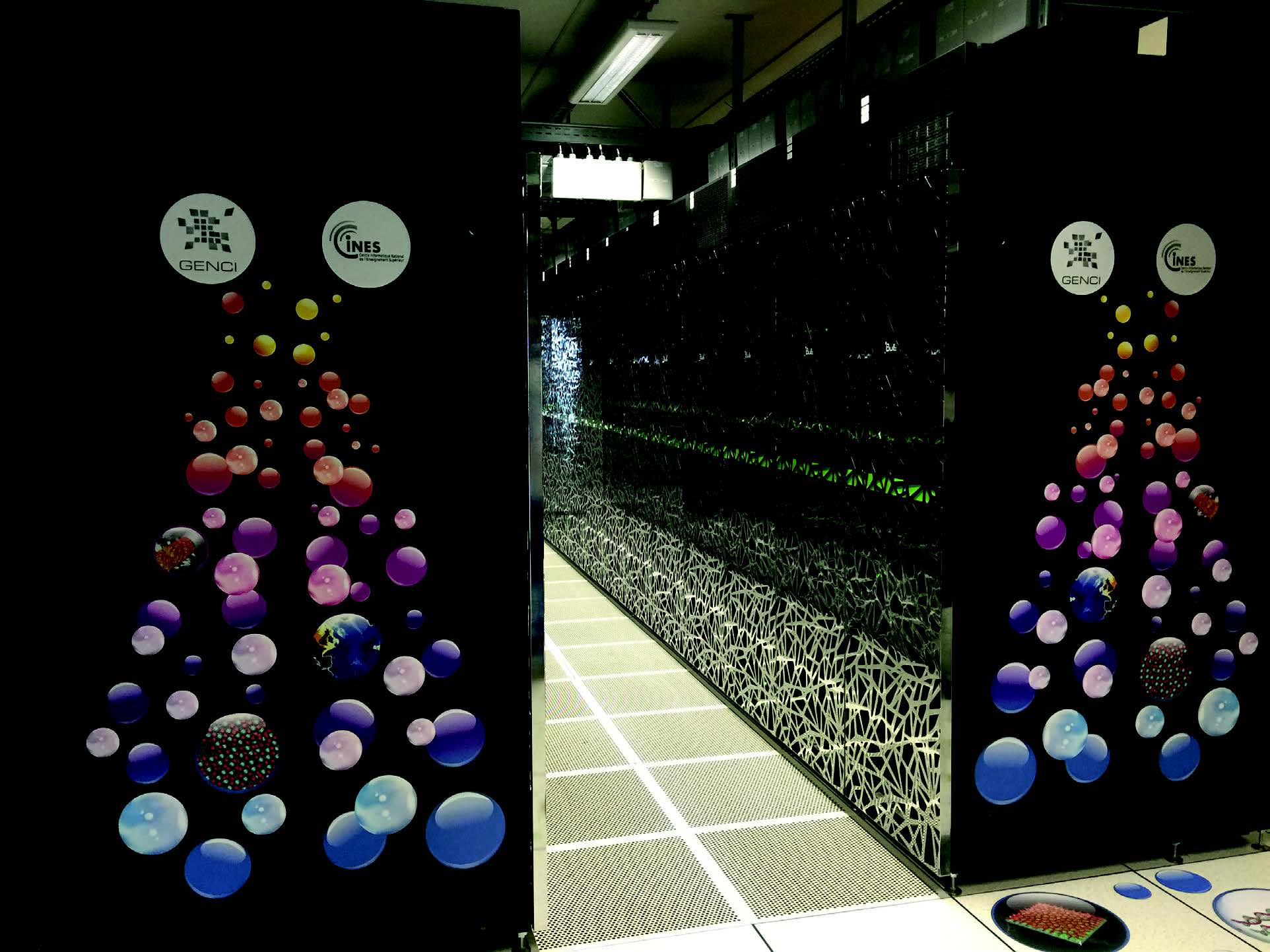Paris, April 28, 2020
Two of the most powerful supercomputers in France, Joliot-Curie, operated at the CEA’s supercomputing center (TGCC), and Occigen, operated at CPU’s supercomputing center (CINES), are furnishing urgent computing accessibility to big laptop methods to European exploration groups involved in the battle versus COVID-19. The goal is to execute epidemiological scientific studies of COVID-19 virus unfold, understand its molecular construction and actions and massively display screen and test prospective upcoming molecules, to accelerate the research for an efficient vaccine and assistance the world battle versus the virus. The two supercomputers are based mostly on Atos’ BullSequana system, world leader in electronic transformation.
Immediately after only a few months of GENCI’s COVID 19 quickly observe accessibility, GENCI, the French countrywide higher-effectiveness computing agency, announces that there are now far more than 20 scientifically assorted COVID19 initiatives, operating on its 3 countrywide supercomputers between which are Joliot-Curie and Occigen, collectively with Jean Zay at IDRIS, with the devoted support of assistance groups in these facilities.
Joliot-Curie at TGCC
Joliot-Curie, with its 22 petaflop/s, is the most powerful supercomputer in France devoted to educational and industrial open up exploration. As component of PRACE (Partnership for Innovative Computing in Europe), European experts are relying on Joliot-Curie to operate currently a few COVID-19 big scale initiatives in the context of the PRACE COVID-19 Fast Observe connect with. Just one venture simulates the practical proteins of the SARS-CoV-2 virus designed from hundreds of thousands of atoms to understand the mechanisms of the virus infection in get to create therapeutics. The other venture employs computational screening, a very well-acknowledged method utilized in drug discovery, to determine and strengthen viral protein inhibitors, molecules which are capable of blocking the SARS-Cov-two protein. This venture could support supporting the growth of a therapy to sluggish down the COVID-19 outbreak.
The last venture brings together the examine of the outcome of antimalarial prescription drugs on a variety of human coronary heart tempo kinds using into account a wide range of comorbidities that may perhaps be present in the infected inhabitants, and also employs computational fluid dynamics (CFD) to far better understand the elaborate hemodynamics connected with Nord-South Syndrome.

In addition to these PRACE COVID-19 Fast Observe initiatives, groups of researchers are carrying out preparatory simulations on precedence countrywide allocations of computing capability on the Joliot-Curie supercomputer. For case in point, researchers from the Grenoble Interdisciplinary Investigate Institute (IRIG) and the CEA’s Joliot Institute are working on the research of inhibitors in COVID-19. The SPIKE protein makes it possible for the virus to penetrate the cell membrane. Thanks to the simulation of the electronic construction of the protein and the connected inhibitor, it is possible to supply specific info on the toughness of the inhibition but also structural info to determine the amino acids concerned and their connected polarities. This first operate designed it possible to validate the strategy and hence to post a fifteen-million-hour venture to PRACE to examine the microscopic and thermodynamic variables that may perhaps or may perhaps not favour the interaction between the main SARS-CoV-two protease and promising new inhibitors. The objective is to establish an ab initio in silico instrument to estimate properly the interaction qualities of proteins interacting with all kinds of ligand people.
Occigen at CINES
Amongst the COVID-19 connected initiatives on Occigen, researchers are operating simulations to examine the SARS-Cov-two helicase enzymes in even more element, in get to far better understand the genetic make-up of the virus. It is also staying massively utilized – everyday beyond 40,000 cores, close to 50 percent of the complete Occigen’s capability formed by 86,000 cores for 3.5 petaflop/s – with computational screening strategies, to nearly test far more than 1.5 billion molecules a thousand of which will be synthesized and analyzed in labs for their potential to inhibit SARS-Cov-two. The scale of this virtual screening is unparalleled and is only designed possible because of to the computing power of the supercomputer.

Stephane Requena, CTO of GENCI, mentioned: “We’re happy with the 3 countrywide facilities to be in battle versus COVID-19 and that our powerful supercomputing and AI capabilities are staying utilized by researchers to add to these endeavours. We hope that these computational results from the 20+ initiatives at this time operating on our systems, will assistance researchers and experts to understand far more about the virus and in the long run support create a therapy to cease this pandemic.”
Pierre Barnabé, Head of General public Sector & Protection and Head of Major Information & Cybersecurity, Atos, extra: “We are honored to assistance people researchers and experts in their operate to support battle versus COVID-19. By making use of the capability of our BullSequana supercomputers, which operate 1000’s of times quicker than typical personal computers, we are enabling them to help you save worthwhile time and serving to find a get rid of to this pandemic.”
Christine Ménaché, Head of the CEA’s Incredibly Big Computing Center (TGCC) and Boris Dintrans, Director of CINES jointly state: “All the TGCC’s and CINES’s assistance groups have been mobilized in a potent spirit of solidarity to fulfill the anticipations of all end users and in certain these scientific initiatives in link with Covid19.”
Supercomputers have tens of 1000’s of processors that operate collectively to execute big calculations, process and assess big quantities of information making use of AI algorithms. GENCI’s completely merged supercomputing systems signify currently far more than 41 petaflop/s of computing capability and one hundred petabytes of huge information storage.
